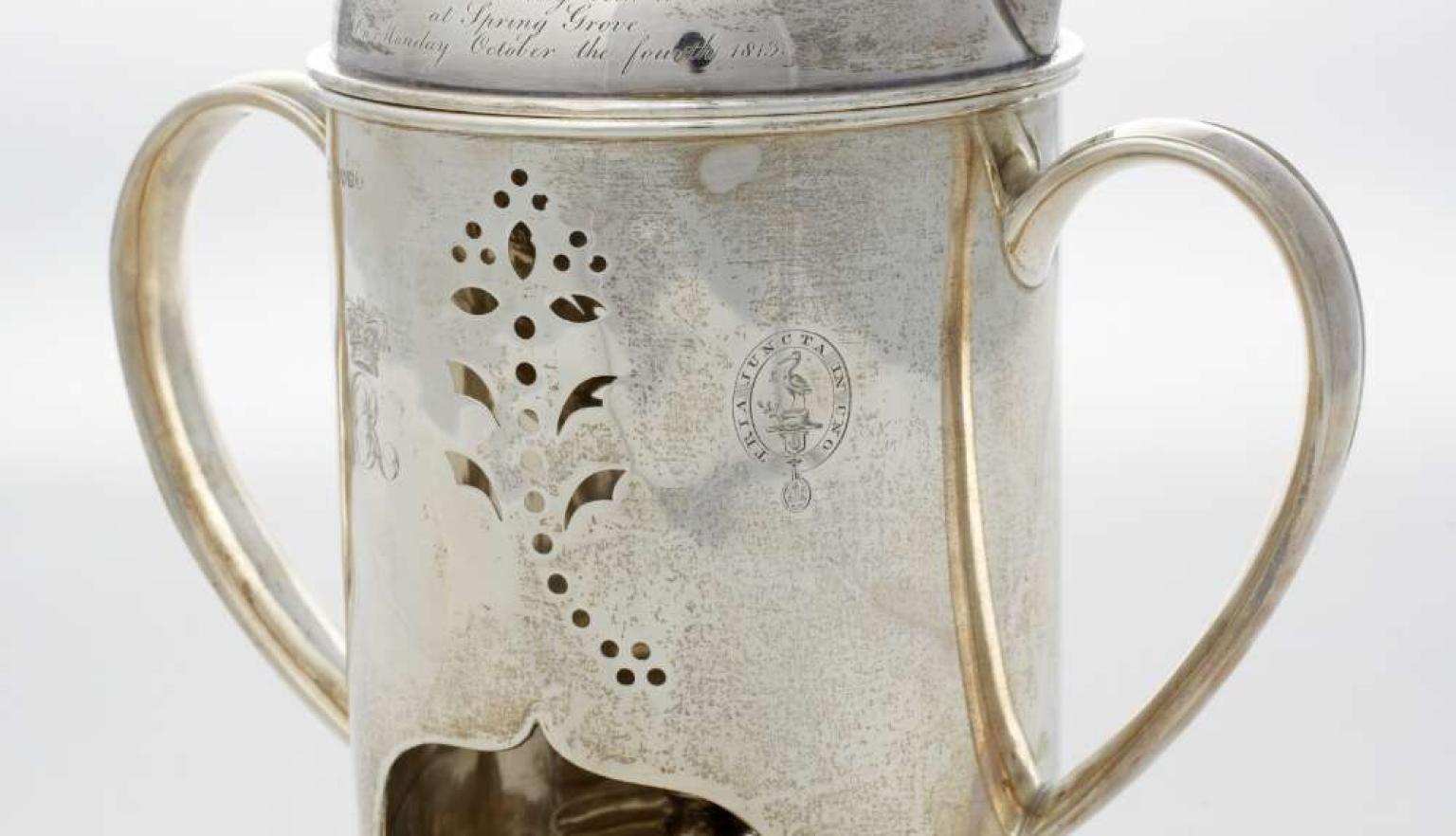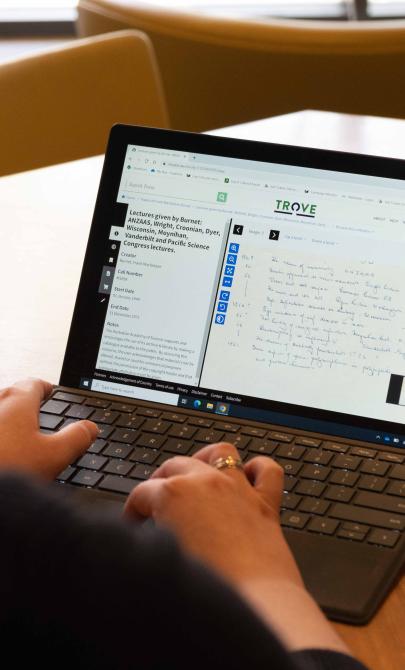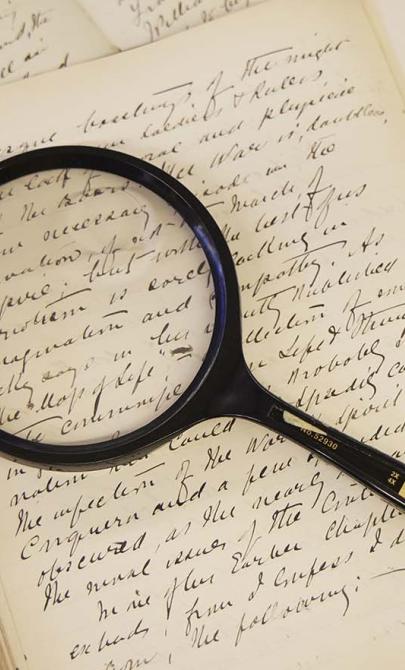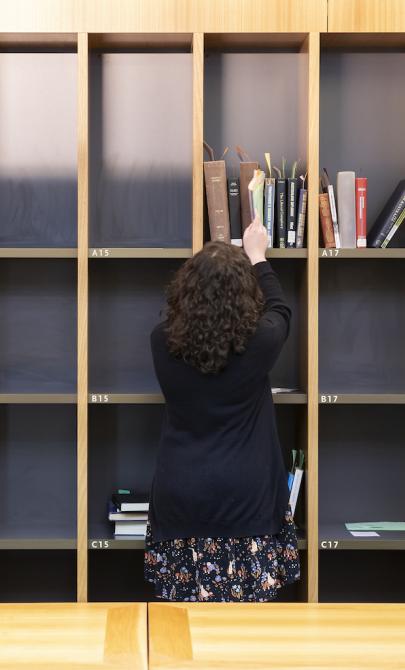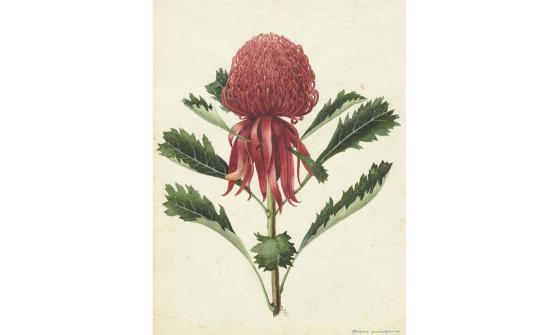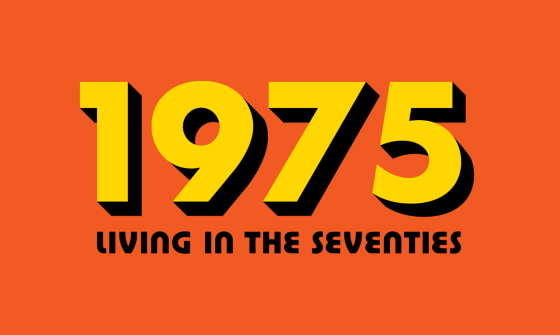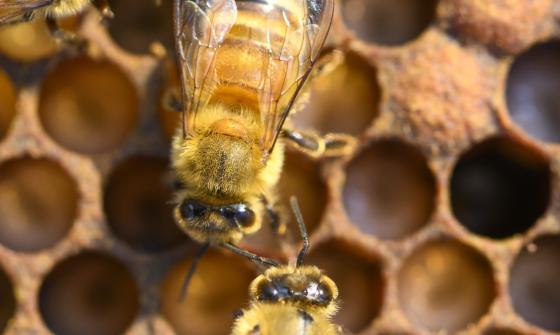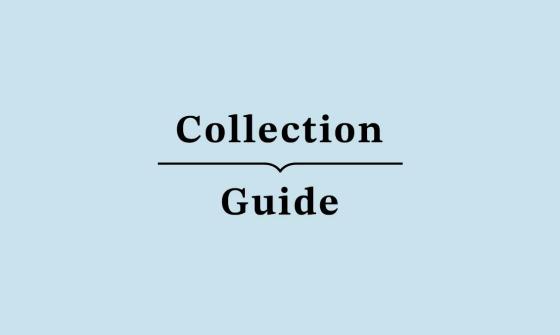Joseph Banks Collection
Collection highlights
Key items in the collection
This collection hosts a range of formats, including:
Papers of Sir Joseph Banks, 1745-1923
The collection of Sir Joseph Banks’ papers at MS 9 is a mixed collection created from various sources. Most of the letters were originally collected by E.A. Petherick during an auction in 1886, when Lord Brabourne was selling parts of the large Banks archive. Petherick bought 20 lots at the sale. The letters were organised by the auctioneers in alphabetical order, which is why many of the correspondents have last names starting with B, C, F, K, and P.
The collection includes 31 draft letters and manuscripts written by Banks. These documents contain his draft letters to the Viceroy of Brazil from November 1768, his observations on Tahitian women, and various accounts related to Omai's visit to England from 1774 to 1776. The letters received by Banks date from 1757, when he was a schoolboy at Eton, to 1819, the year before his death. Notable correspondents include Lord Bathurst, David Collins, Allan Cunningham, Alexander Dalrymple, Johannes Forster, Captain John Hunter, Philip Gidley King, Lord Morton, Lord Nelson, William Paterson, Arthur Phillip, and John Webber. Of particular interest are the ‘Hints’ from the Earl of Morton regarding relations with Indigenous peoples (1768) and the letters from Hunter and King about conditions in New South Wales and Norfolk Island.
The Nan Kivell Collection also contains two groups of Banks’ letters (MS 4141, MS 4246), dating from 1803 to 1820, which do not discuss Australia or the Pacific.
Papers of John Montagu Sandwich, 1771-1784
The 4th Earl of Sandwich, who served as First Lord of the Admiralty from 1771 to 1782, was a close friend of Banks. His collection of papers (MS 7218) mainly includes letters related to the publication of the official account of James Cook's third voyage in 1784. This collection has nine letters written by Banks to Sandwich between 1782 and 1784.
In addition to the letters in MS 9 and MS 7218, we also have several original letters written to Banks. Correspondents include Allan Cunningham, James Fleming, Sir John Gore, Mungo Park, and Edward Waterson.
Personal collections held by the Royal Society
- Correspondence of Sir Joseph Banks, 1st Baronet (M469), 1773-1815 (Fitzwilliam Museum, Cambridge)
- Records held by the Linnean Society of London (M596-97), 1790-1870
- Collections held by the School of Oriental and African Studies (M686) Vocabularies compiled by Sir Joseph Banks, 1768-71 (School of Oriental and African Studies, London)
- Papers of Allan Cunningham (M692), 1817-39 (Natural History Museum, London)
- Records of the Royal Botanic Gardens, Kew (M730-88), 1793-1928
- Papers of Sir Joseph Banks, 1st Baronet (M1192), 1768-1820 (British Library)
- Correspondence of Robert Brown (M1193)
- Collections held by the Kent Archives Office (M1903), Papers of Knatchbull Family, 1768-1872 (Kent Archives Office)
- Records and Collections of the Royal Society (M1927-37), 1699-1937
- Personal collections held by the Royal Society (M1938), Correspondence of Sir Charles Blagden, 1774-1820 (Royal Society)
- Correspondence of Sir Joseph Banks, 1st Baronet (M2662), 1768-1819 (Natural History Museum, London)
- Matthew Flinders family papers (M3033-37), Correspondence of Matthew Flinders, 1797-1814 (National Maritime Museum, London)
- Letters relating to Sir Joseph Banks from the collection of the Alexander Turnbull Library (G1901), Letters of Sir Joseph Banks, 1767-98 (Alexander Turnbull Library)
- The history of science and technology [microform]. Series 2, The papers of Sir Joseph Banks, 1743-1820. Part 3, Papers relating to voyages of discovery, 1743-1853, from the British Library, London, 1586-1875 1743-1853 (G27561-76), c.1700-1823 (British Library)
Sir Joseph Banks is represented by several notable artworks, including:
Original portraits
- Pencil Drawing: By George Dance.
- Miniature Watercolour: Initialled ‘N.S.’
Group portraits
- Oil Painting: By John Mortimer (circa 1771) featuring:
- James Cook
- Joseph Banks
- Lord Sandwich
- Daniel Solander
- John Hawkesworth
- Watercolour: By Theodore Von Holst (1838), a copy of a portrait by William Parry (circa 1775) featuring Banks, Solander, and Omai.
Prints of Sir Joseph Banks
There are many prints of Banks, including:
- Engravings from portraits by:
- Sir Thomas Lawrence
- Thomas Phillips
- Sir Joshua Reynolds
- John Russell
- Benjamin West
- Famous Caricatures:
- The Botanic Macaroni (1772)
- The Great South Sea Caterpillar, James Gillray (1795)
- Other Notable Engravings:
- A portrayal in the frontispiece of The Philosophical Puppet Show (circa 1783).
- Engravings depicting Banks’s coat of arms and his country house, ‘Spring Grove,’ in Middlesex.
After returning to England in 1771, Banks arranged for the production of 738 copper plates from watercolours created by Sydney Parkinson during the Endeavour voyage. Although the project to publish these drawings was abandoned, the following publications emerged:
- Illustrations of the Botany of Captain Cook’s Voyage (1900-1905): Published by the British Museum in three volumes, featuring 328 engravings.
- Cook’s Florilegium (1973): A limited edition featuring 29 prints, published by Lion and Unicorn Press.
- Banks’ Florilegium (1980-1990): A complete collection of plates published in colour by Editions Alecto, issued in 35 parts.
About Joseph Banks
Joseph Banks was born in London in 1743 to a wealthy family. He went to Harrow, Eton, and Oxford, where he developed a strong interest in botany. After his father’s death in 1761, Banks inherited enough money to follow his scientific passions.
Becoming a naturalist
In 1766, Banks was elected as a Fellow of the Royal Society and met botanist Daniel Solander. That same year, he joined an expedition to Labrador and Newfoundland as the team’s naturalist.
In 1768, Banks joined Lieutenant James Cook’s Pacific expedition on the Endeavour, bringing along a small team, including Solander. For nearly three years, they collected plant specimens and recorded their findings while visiting South America, Tahiti, New Zealand, Australia’s eastern coast, and more. They discovered about 1,400 new species. Banks gained significant recognition when they returned to England in 1771.
He was supposed to join Cook’s second voyage, but disagreements led to Banks backing out. He instead visited Iceland briefly.
A leader in science
At 30, Banks shifted from exploring to becoming a leader in science. He became President of the Royal Society in 1778, a position he held until his death in 1820. Banks was influential in many scientific and government institutions, including the British Museum and the Royal Botanic Gardens at Kew. He maintained contact with scientists around the world.
Interest in Australia
Banks stayed interested in Australia after visiting in 1770. He recommended Botany Bay as a penal colony site and supported expeditions led by figures like William Bligh and Matthew Flinders. He also encouraged naturalists to study Australia’s plants and wildlife.
Background to the collection
Most of Joseph Banks' papers were originally part of the Petherick Collection, acquired in 1909 after E.A. Petherick purchased them at a Sotheby’s auction in London in 1886. The Nan Kivell Collection, bought in 1959, includes several letters from Banks, along with additional letters that have been purchased from dealers or auctions over the years. Lord Sandwich's papers were also obtained from a Sotheby’s auction in 1985.
A drawing of Banks by George Dance and several portrait engravings were purchased from Rex Nan Kivell in 1959. A miniature portrait was acquired from Sydney dealer Anne McCormick in 1986. The painting by John Mortimer was bequeathed to the Library by Dame Merlyn Myer in 1987. Banks' Florilegium exists as a collection acquired between 1981 and 1990.
The papers and letters of Joseph Banks are located in the Manuscripts Collection, primarily at MS 9. Use the papers finding aid.
Microfilms of Banks’ papers are stored in the Newspaper and Microform Collection. Lists of the Banks Papers filmed at institutions like the British Library, Fitzwilliam Museum, and Natural History Museum are filed alongside other Australian Joint Copying Project lists in the Newspaper and Microform Reading Room. Additionally, a 112-page guide to the Banks Papers microfilmed by Adam Matthew in 1995, titled The History of Science and Technology, Part 2, is available in the same reading room.
Pictures, including those from the Florilegium, are part of the Pictures Collection, while publications related to Banks can be found in the Rare Books, Australian, and general collections.
The extensive archive of Sir Joseph Banks was divided by his nephew, Sir Edward Knatchbull, and later by his son, Lord Brabourne. In 1884, the New South Wales Government purchased many Australian papers from Lord Brabourne, which are now housed in the Mitchell Library. Other papers were sold at auction, leading to Banks' documents being found in various libraries across multiple countries.
Some of the largest collections are located in the Alexander Turnbull Library in Wellington, British Library, California State Library in Sacramento, Fitzwilliam Museum in Cambridge, Natural History Museum in London, Royal Botanic Gardens at Kew, Royal Geographical Society of Australasia in Adelaide, State Library of New South Wales, University of Reading Library, University of Wisconsin Library in Madison, Wellcome Library in London, and Yale University Library in New Haven.
Additionally, a pencil drawing of Banks by Henry Eldridge can be found in the Art Gallery of New South Wales.
This guide was prepared using these references:
- Patricia Fara, Presidential portraits: Joseph Banks in the National Library, National Library of Australia News, vol. 9 (3), Dec. 1998, pp. 7-10
- Oxford dictionary of national biography, 2004
- LA Gilbert, Banks, Sir Joseph (1743-1820), Australian Dictionary of Biography online
- Jennifer Lovell, A Bath butterfly: botany and eighteenth century sexual politics, National Library of Australia News, vol. 15 (7), April 2005, pp. 15-17
- Alan Peart and Florilegium Banks, SGAP Journal, vol. 10 (16), Aug. 1989, pp. 439-4
